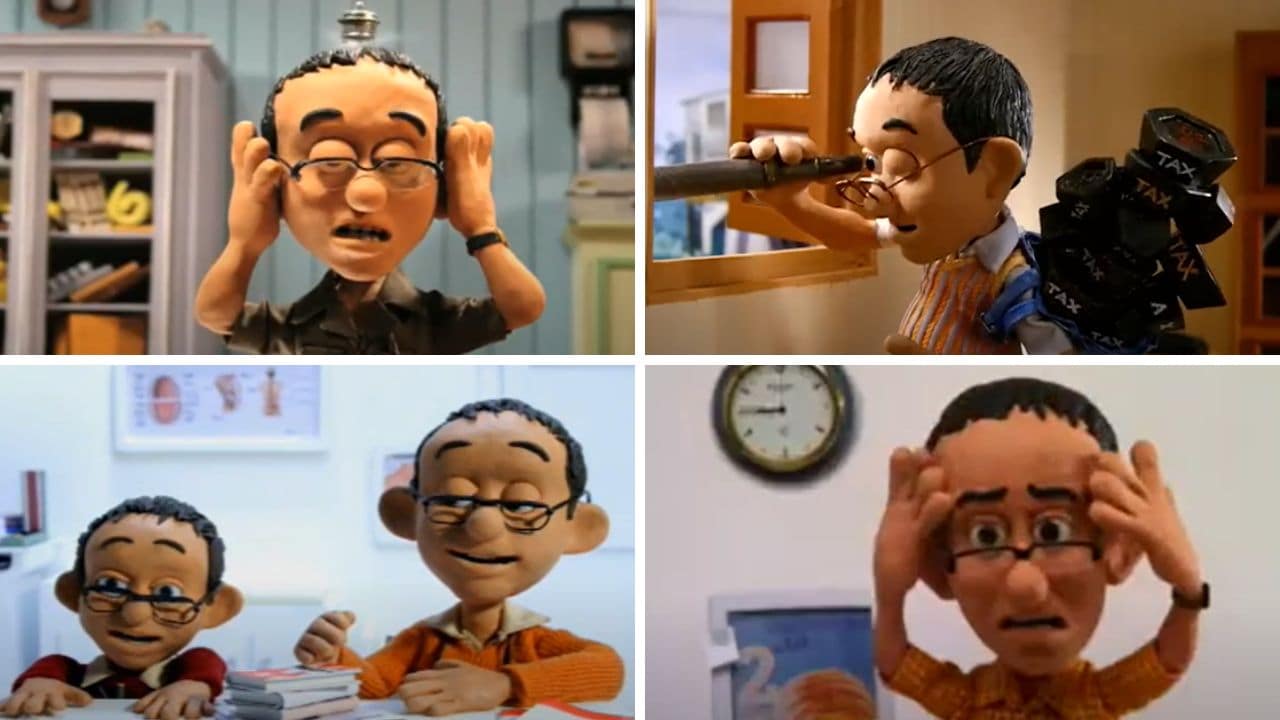A thin, bespectacled man named ‘Chintamani’ with a receding hairline and slight paunch has a cooker’s whistle planted on his head, where the vapour is being discharged from his ears, thus signifying the release of his tension.
As the commercial towards its end highlights ICICI Prudential Life Insurance’s benefits of pension and tax benefits, it ends with ‘No Chinta, Only Money’.
The character, which came to life in 2005, served as a messenger through the ads easing the tension of most of the country’s taxpayers.
Birth of ‘Chintamani’
In 2005, ICICI Prudential Life Insurance, a leading life insurance player, approached Lowe Lintas (formerly Lintas), with the intention of creating buzz around ULIP (Unit Linked Insurance Plans). This was initially for a radio spot.
As the brief came Delna Patel’s way, a ‘creative’, she took up the mandate and treated it like her ‘passion project’.
On being asked about her designation, Patel recalled in a conversation with Storyboard18 that in those days, there were no designations at Lintas, and it was either a ‘creative head’ or a ‘creative’.
Coming back to the creation of the radio spot, Patel wrote the script, a jingle, where towards the end of it, ‘No Chinta, Only Money’ was heard. The radio spot went on to become a rage. ICICI Prudential Life Insurance attracted success and their budgets increased, which paved the way for television advertising.
Narendra Yadav, former creative head, Lowe Lintas, said, “The target audience was always the tax-saving people, who were sensitive to tax brackets and wanted to save tax.”
The subject ULIP, as Patel labels it, is dry and difficult to explain in layman’s language. Here, Patel derived inspiration from late cartoonist RK Laxman’s creation ‘The Common Man’, where they could create a relatable everyday character who would appeal to the society.
As the concept was presented to the client, Patel highlighted that if they could make it in Rs seven lakh—which was the budget—they could proceed ahead. Patel said, “We were told that they need X number of callbacks on the back of this campaign. We exceeded their expectations within the first week as the campaign did really well.”
Patel roped in a freelancing animator Nand Kishore and they worked together to bring the character to life. She said, “We started with his face, and then we went into what he would look like physically. If you notice, the character has a slightly receding hairline and a little bit of a pot belly, he would put on short-sleeved shirts, and trousers, and was just your regular average Indian man.”
Interestingly, there was a production manager named Chintamani Agashe at Lowe Lintas when Chintamani was being conceptualised. There was a talk that the mascot was named after him. However, Patel said the character was named Chintamani after the line ‘No Chinta, Only Money’.
Chintamani happened to be the first claymation character (As per Adobe, an animation technique using movable clay characters and stop-motion recording) in India.
Patel explained, “The idea was to try something completely brand new to get people’s attention. It was India’s first claymation spot. We did not have budgets to do 3D animation and 3D animation in those days was not as advanced as it is today. So, the idea was to make him look and feel real, and get away with being entertaining but educational at the same time.”
Tasting success
The first television commercial, whose script was written by Patel, featured Chintamani with wrinkles on his forehead which he irons out. The ad saw success. Patel highlighted, “The project grew from ‘Let’s disrupt it’ to ‘it becoming Chintamani’.”
Post Nand Kishore, Suresh Eriyat of Famous House of Animation was roped in, as the budget tremendously improved post the ad’s release.
Eriyat revealed, “They used to release these films in the month of January. I directed four to five films which became very popular at that time. And from the film, the still images were taken for outdoor advertising.” This was followed by print advertising too.
One of the films was done in 2D owing to a lower budget, recalled Eriyat.
Patel worked on Chintamani for three years where the scripts were penned by her. Post her departure, a new team came into the picture. The character was last seen on television screens in 2016.
Read More: The Butter Half: How the Amul girl became the toast of India
